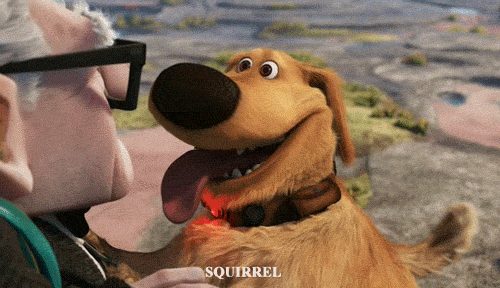
Today’s approach to successful content marketing relies on an old songwriting trick known as the hook. With online marketing, however, the hook is visual rather than oral.
A musical hook is designed to catch the listeners’ ears, and to make them want to hear a bit more of the song. With blog posts and other online content, the right images can induce your targets to read on, rather than clicking away to the next shiny thing.
Remember the old advertising adage that a picture is worth a thousand words?
While that may be hyperbole, we do know — thanks to scientific research — that a good image is worth about 84 words. And in today’s world of limited attention spans, 84 is pretty good for the purpose of content marketing.

Thanks to Google’s current algorithms, content is the keystone of a successful marketing plan. But neither man nor woman can live on words alone.
Successful content marketing requires engaging and effective use of the written word, but it also requires dynamic visual content to attract the reader’s attention to it. This relates to a human psychological phenomenon known as the picture superiority effect.
The human brain has a better memory for images than for words. Consequently, we are compelled to stop and look at images (or infographics, charts, drawings) that catch our eye. And that exponentially increases the chance that we will peruse the written content that accompanies it.
Assuming the individual grabs the visual hook and reads the content, he or she will have a better chance of remembering and retaining the information because of the image.
And if you want to keep them reading until the end, you may need additional visual content along the way to keep their attention and boost the power of your content marketing.

Thanks to centuries of fighting to perpetuate the human race, we humans have highly developed visual instincts. Originally, these instincts helped keep the wandering caveman from being blindsided by a hungry saber-toothed tiger.
Today, we use this ability primarily to filter out distractions, keep us on track and ensure that we’re alert to anything important that may come along.
When you use images in conjunction with content marketing, your goal is to say, “HERE! Look right here! This is important!!” If you fail to convey that message, prospects may simply scroll on until something important-looking catches their eye.
Did you know that written content that features images gets 94 percent more views than content with no images? Or that content with images is 40 times more likely to be shared?
I think we can all agree that images and visual content are requisite to effective content marketing. But how do we know which images will provide the most engagement?

Humans are social creatures and – deep down – what we really want is connection. And what do we connect with most deeply?
We connect with other people.
The research demonstrates overwhelmingly that we best remember images with people in them, as long as the subjects have visually recognizable facial features. Some viewers prefer single-subject images, but a larger audience prefers images with two or three subjects interacting. Images depicting groups of four or more become exponentially less effective.
The more intense the emotion the people in the images reflect, the more memorable the image will be. And, the more memorable the image, the more effective your content marketing will be.
And although we can acknowledge the beauty of a serene landscape, sweeping mountain vista or a dusky sunset, we won’t remember them for beans after 10 minutes. If you must choose an image without human subjects, the research recommends using images of human-scale space and close-up objects.
The bottom line is, when choosing images for your content marketing, choose those that your prospects can relate to, rather than those they might simply find pleasing to the eye.
When your goal is to reach influencers, the game changes a little. For people who might aggregate your content widely to their audience, opt for the infographic, chart or graph.
Influencers, bloggers and thought leaders love infographics, because these graphics create an effective hook for their content!

Human beings use psychological constructs known as schemas for learning and remembering. Schemas are our individual shorthand or mental code for how we perceive the world. We create them from our life experiences and prior knowledge.
When we encounter something new, our brain instantaneously flips through all of our schema to find information that fits the encounter, and that’s how we frame our reaction.
This may sound a bit like psychobabble, but here’s a great example:
If you attended Catholic school where you were taught by a strict nun who rapped you on the knuckles with a ruler if you acted up, you probably developed a vivid schema for this portion of your life.
If you happen to be walking along the sidewalk and you see a woman coming toward you wearing a full nun’s habit, your schema is what makes you jam your hands in your pockets before you even realize you’ve done it.
Your prior knowledge — and the resulting schema — ensured that you could relate your past experience to the present. Look for images that will conjure the same kind of visceral, emotional (but perhaps less painful) response from your audience. When you find them, you will see your content marketing efforts really start to pop.

The online photography experts at 500PX ISO compiled data on their most popular photos, providing some highly valuable insights.
• Today’s online consumers can recognize a stock photo (or one that simply feels like a stock photo), and they are put off by any content marketing image that has that “canned” feel.
• Candid shots are highly preferable to posed shots. This ties back to the importance of authenticity in all of your content marketing, including the images you select to complement your blogs, social media posts and articles.
• Use close-up images rather than wide shots. When possible, choose photos in which the human subject(s) face the camera, rather than away.
Color is also important. In fact, one recent study demonstrates that color increases brand recognition by 80 percent, and that 85 percent of shoppers cite color as their primary reason for buying a product.
In other words, choose colorful images, rather than black and white, when planning your content marketing.
Be Locally SEO specializes in SEO and internet marketing. We use both written and visual content as an important part of improving your website’s ranking in the search engines. Using scientifically based methods and cutting-edge technology, we can help you achieve your company’s goals and grow your business.
Contact us to learn more about how we can help you with content marketing and effective image selection.
